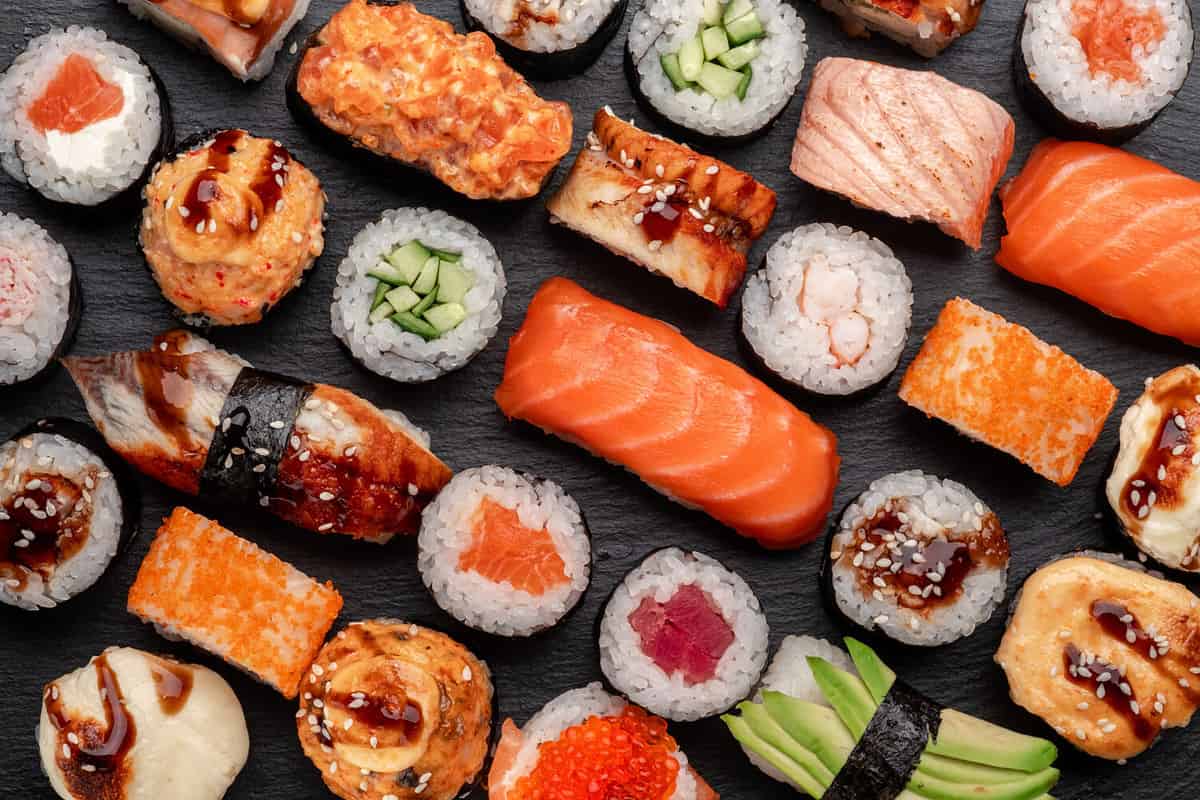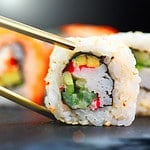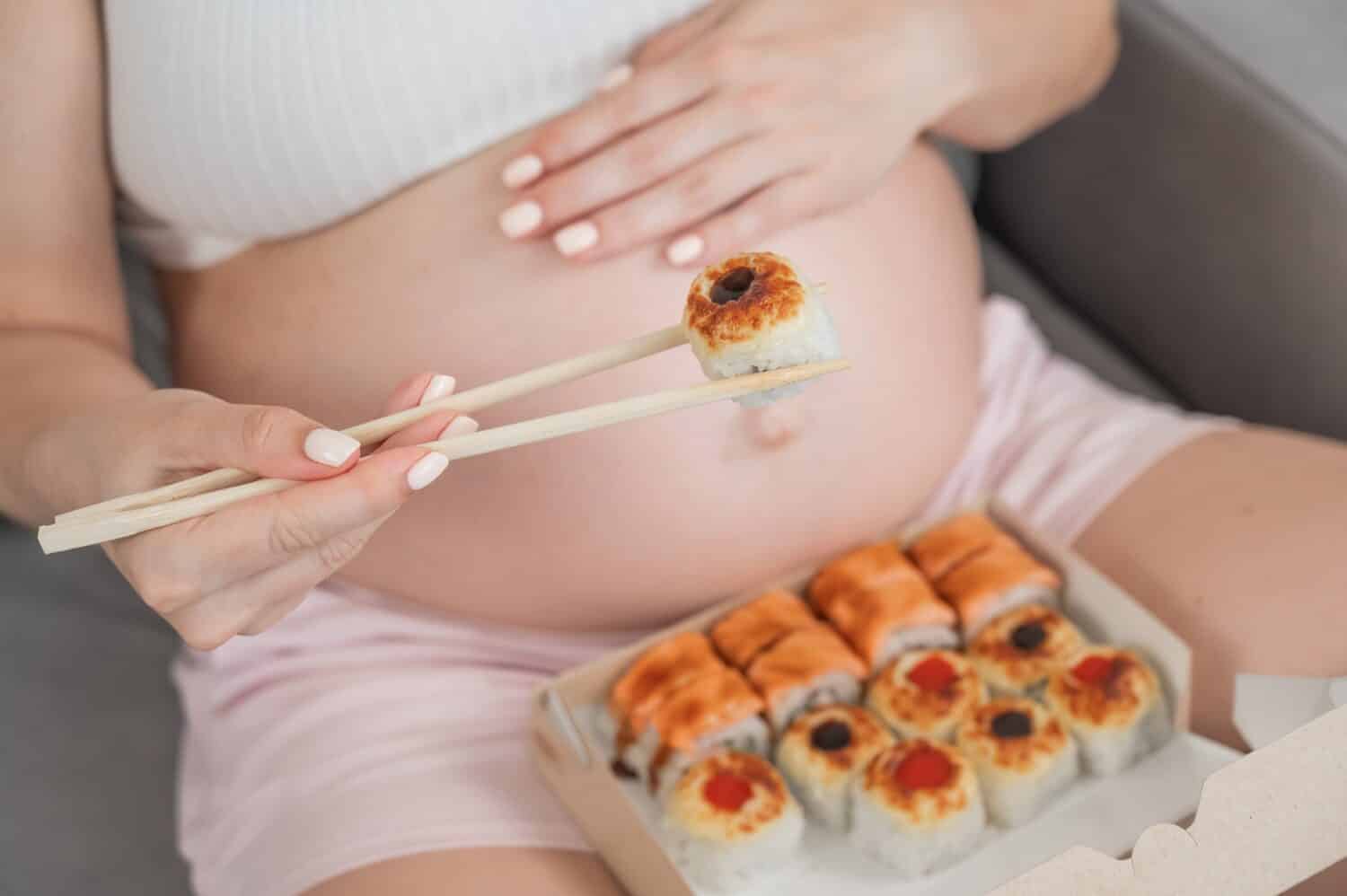Pregnancy is an exciting time when new changes are happening as a woman progresses closer and closer to the day of finally meeting her new baby. Altered hormones, new cravings, and increased appetite are all changes that women experience. Additionally, there are now a myriad of foods that are suddenly on her do-not-eat list. With ever-changing opinions in the medical field on what foods are deemed safe for pregnant women, it can be difficult to keep up. In this article, we will be specifically focusing on many peoples' favorite food, sushi. We will answer the question that so many pregnant women want to know — can you eat sushi when pregnant?
What is Sushi?

©Andrei Iakhniuk/Shutterstock.com
Before discussing if you can eat it when pregnant, we should be sure to clarify what sushi is. When people hear the word sushi, they now typically think of raw fish and rice. Sushi is a Japanese dish prepared with vinegared rice and various other ingredients. Sometimes those ingredients include raw fish, but other times they are cooked. The most important ingredient in sushi is the rice. Rice is always present in sushi, whereas the meat and vegetables can change.
Can You Eat Sushi When Pregnant?

©iStock.com/Basilico Studio Stock
Now, the answer to the question you have all been waiting for. Can you eat sushi when pregnant? The answer is, it depends. Most times, you will hear the advice to avoid sushi while you are pregnant. That is because of the risk of exposure to bacteria and higher levels of mercury. There is a bacteria called Listeria monocytogenes that can be found in raw seafood, as well as other food items. This bacteria can lead to an infection called Listeriosis. Pregnant women are much more susceptible to this infection, and it should be avoided as it can lead to complications with the pregnancy and your baby.
Additionally, high levels of mercury should also be avoided. High levels of mercury can increase the chance of birth defects. These are the two main reasons that the majority of experts will advise against eating sushi. However, they are using sushi as an encompassing term, when in reality it is just raw fish and fish that are high in mercury that should be avoided. Not all sushi is uncooked, and certain fish provide beneficial nutrients that help with the growth and development of the baby.
Is There a Safe Type of Sushi to Eat While Pregnant?
Pregnant women can enjoy sushi that contains cooked fish that are low on the mercury list. The NRDC has compiled a list of the fish and seafood commonly used in sushi and has shown where they fall on the mercury level ratings. Those who score high should be avoided, while those who score low can be enjoyed in moderation. Some of the fish and seafood that can be enjoyed in moderation are:
- Anago (conger eel)
- Ebi (shrimp)
- Hatahata (sandfish)
- Kani (crab)
- Masu (trout)
- Sake (salmon)
- Tako (octopus)
Great Sushi Substitutes
Oftentimes, if you are craving sushi it is not usually the raw fish that you are craving. It is either the sushi rice or some variation of the sauces, such as spicy mayo, wasabi, or soy sauce. You can curb the cravings by making your sushi at home! My fiance and I love sushi and we had a sushi-making kit. However, we didn't have access to raw fish that we trusted. We cooked chicken and beef and rolled those cooked meats into our sushi roll instead and it was delicious!
Additionally, you can create sushi bowls that are safe and healthy. You can use plain rice, add veggies of your choosing, throw in some cooked shrimp or meat of your choosing, and top with sesame seeds, soy sauce, and some spicy mayo. Now you have yourself a similar flavor without the risks!
Other Foods to Avoid During Pregnancy

©Doucefleur/Shutterstock.com
Some foods may seem like common sense to avoid during pregnancy, while others may surprise you. The American Pregnancy Association has placed these foods, and others, on the avoid list when pregnant.
- Raw meat — from fear of various bacteria, one of which is salmonella.
- Deli meat — has been known to be contaminated with bacteria that cause listeria.
- Raw eggs — because of the risk of salmonella.
- Unpasteurized milk — also the fear of causing listeria.
- Unwashed vegetables — vegetables that are unwashed or not properly washed can lead to toxoplasmosis.
- Raw sprouts — contain higher levels of bacteria.
Recipe Card
Once you're ready to add that delicious Asian dish to your diet, why not be adventurous and try making it at home with one of our Sushi recipes? Enjoy!
Print
Sushi Recipe
Ingredients
For the Sushi Rice:
- 1 cup sushi rice
- 2 cups water
- 1/4 cup rice vinegar
- 2 tablespoons sugar
- 1 teaspoon salt
For the Sushi Filling (Choose one or more):
- Sushi-grade raw fish (such as tuna or salmon), thinly sliced
- Cooked and seasoned shrimp
- Avocado, thinly sliced
- Cucumber, thinly sliced into matchsticks
- Carrot, thinly sliced into matchsticks
- Cream cheese, thinly sliced (for a Philadelphia roll)
- Seaweed (Nori) sheets
- Soy sauce, pickled ginger, and wasabi for serving
Equipment:
- Bamboo sushi rolling mat (Makisu)
- Plastic wrap or a plastic food storage bag
Instructions
1. Prepare the Sushi Rice:
- Rinse the sushi rice under cold running water until the water runs clear.
- Combine the rinsed rice and water in a saucepan and bring to a boil. Reduce the heat to low, cover, and simmer for about 15-20 minutes, or until the rice is tender and the water is absorbed.
- In a small saucepan, heat the rice vinegar, sugar, and salt over low heat until the sugar and salt dissolve. Remove from heat.
- Transfer the cooked rice to a large bowl and while it's still hot, add the seasoned rice vinegar. Gently mix and fan the rice to cool it down while maintaining a glossy appearance. Cover with a damp cloth to keep it moist.
2. Prepare the Sushi Fillings:
- Slice your chosen fillings into thin strips or pieces, ensuring they are long enough to fit across the width of your seaweed sheets.
3. Assemble the Sushi:
- Lay a bamboo sushi rolling mat on a clean surface and cover it with plastic wrap or a plastic food storage bag to prevent sticking.
- Place a sheet of seaweed (Nori) on top of the plastic wrap with the rough side facing up.
4. Add Sushi Rice:
- Wet your hands with water to prevent the rice from sticking. Take a handful of sushi rice (about the size of a small apple) and spread it evenly over the seaweed, leaving about half an inch of seaweed on one edge.
5. Add Fillings:
- Place your chosen fillings on top of the rice, near the center of the seaweed sheet.
6. Roll the Sushi:
- Using the bamboo mat, carefully lift the edge of the seaweed closest to you and fold it over the fillings, tucking it tightly.
- Continue rolling away from you while applying gentle pressure to create a cylindrical sushi roll.
- Wet the exposed edge of the seaweed with a bit of water to seal the roll.
7. Slice and Serve:
- Use a sharp, wet knife to slice the sushi roll into bite-sized pieces. Dip the knife in water between cuts to prevent sticking.
- Serve your homemade sushi with soy sauce, pickled ginger, and wasabi.
The image featured at the top of this post is ©Reshetnikov_art/Shutterstock.com.

